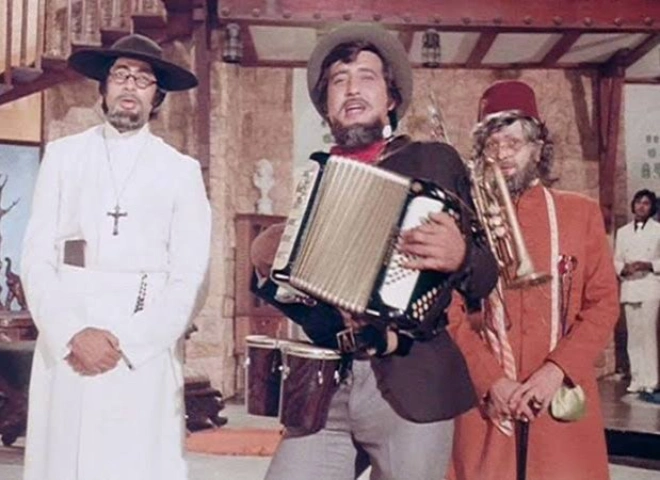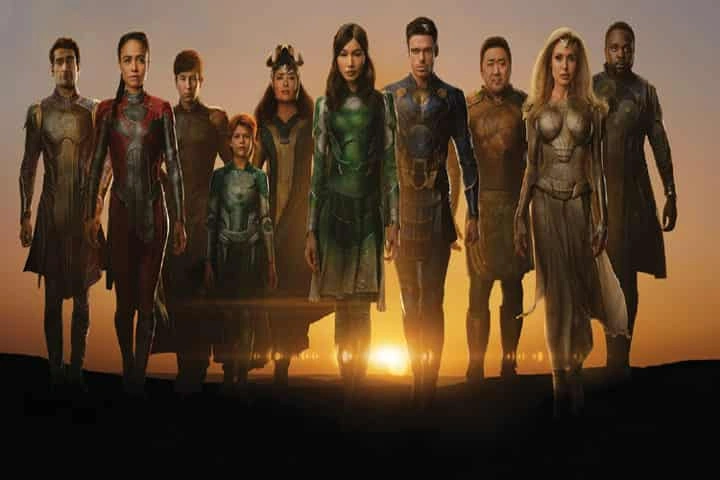How individuals are represented in the movies have a deep and profound impact on how we perceive them. Our perceptions of people then impact our attitudes and beliefs about them. Finally, our attitudes and belief impact our behaviour towards them. For instance, most Hollywood movies present Russians as cold, calculative, methodical, and serious. In a survey conducted by myself in 2004 amongst students of a large university in Louisiana, I found that most of the students believed that Russians were indeed cold, calculative, methodical, and serious. Furthermore, most students had a negative attitude towards them and felt that it was best to avoid them. In a repeat experiment in 2015, with the students of IIM Ahmedabad, pre and post-watching a movie with a Russian character, it was found that after watching the movie the subjects in the experiment did assume that the Russians were indeed cold and did not possess any sense of humour. Overall, repeat stimulus in the media may aid to identity construction.
Specifically, several researchers have empirically demonstrated that movies played a significant role in identity construction. Therefore, it is safe to contend that movies may also impact religious identity construction. Religious identity is defined as a mechanism of identifying oneself with their religion and aspects of that religion. Stuart Hall in his work entitled “cultural identity and diaspora” published in 1996 infers that the audience may acquire other cultural and religious values through media over a period of time. He also argued that viewers get other cultural perspectives through mass media. Movies could act as a tool to present a window into an unfamiliar world. Sensemaking theory suggests that in a new context with various cultural norms and codes, an individual (who is unfamiliar with certain contexts) must understand what is happening (for instance, the attire of an individual, language, and festivals). Therefore, making sense of the environment affects the member’s identity, because it depends on how the member behaves in various situations. Therefore, sense-making can also facilitate identity development through movies.
Hence, it was important for us to examine whether the identities represented in Bollywood movies are continuously reinforcing past identities and impeding the transformation of minorities with time. In order to investigate the aforementioned proposition, ten focus groups were conducted each focus group with 7-10 participants. A standard three-step methodology of conceptualization, interview, and analysis was utilized. Following were the outcomes of the analysis: a) All participants watch movies and average movie diet consumption was approximately 2 to 5 hours per week either in part. b) All participants identified themselves as Indians or Indian Muslims. For, Sikh and Christian participants identified themselves as just Indian. No participant identified themselves as just Muslim. c) Most important events shown in movies that represent identities are family and family interactions, interactions with friends, festivities, religious practices, rituals, and weddings. d) Representation of interactions with both “in-group” and “out-group” members was a significant influencer in the cultural and religious identification process through the mode of the identity negotiation process. e) Demonstration of religious and cultural institutions.
In order to further examine, a survey was developed that examined the following. a) Do movies accurately represent friends, festivities, religious practices, rituals, and weddings of minorities? Do movies accurately represent the “in-group” and “out-group” interactions for minorities? Do movies accurately reflect religious and cultural institutions? Finally, do movies have an influence on the construction of religious and cultural identities for those who are non-minorities? We chose three minority groups viz Muslim, Sikhs, and Christians. A total sample of 205 Muslims, 176 Sikhs, and 113 Christians was obtained. The following were the results of the analysis.
It was found that there was a significant influence of movie viewership on the construction of religious and cultural identities. In other words, 94% of the respondents indicated that they believe that movies encourage the construction of religious identity and cultural identity. However, the construction of religious identity was sharply delineated for those who are not from the represented religion. In other words, Muslim respondents reported that their religious identity was more strongly pronounced and delineated in movies than they experience in everyday lives. In particular, it was reported by more than 81% that attire, mannerism, practices, language, and celebration practices as demonstrated in movies were largely inaccurate and highly exaggerated resulting in more pronounced distinctiveness from the mainstream.
For instance, one respondent stated that “Why do they keep showing all Muslim speaking in Urdu when most Muslims don’t even associate themselves with Urdu, I speak Marathi, Hindi, and English?”. Another respondent stated that “they show every Muslim in the movie wearing a ‘Taqiyah cap’ when most Muslims in India do not wear it”. The next respondent stated that “In movies, even the Muslims living in Mumbai and other metros are shown as wearing ethnic clothes, whereas most Muslim wear pants/shirt/jeans etc. like others”.
Another Christian respondent stated, “I don’t believe that all Christian girls wear skirts and tops in India, they are like any other girl in India.” Another Sikh respondent stated “All Sikhs are not over the top or comedians, however, most of non-Sikh who meet me in Bangalore think that all Sikhs know sword-fight, are comedians, and love to eat.” 92% of the respondents stated that their rituals, everyday practices, and festival are highly exaggerated. 86% of the respondents stated that the interaction between characters of their religion and the one belonging to the majority religion is disproportionately focused on religious aspects and accentuated distinctiveness.
The interactions are laden with faith-based references which are far from reality. In other words, one Muslim respondent stated that “I don’t understand why my non-Muslim friends always try to hug me three times when I keep telling them that’s not how it works, Indian Muslims can also shake hands?” Another Christian respondent stated that “my non-Christian friends assume that wine is served on the table for every dinner, also that we hold hands and pray before every meal.” Another Muslim respondent states “Not all of us apply thick “SURMA” in our eyes, why do they do that?” A Christian respondent stated that “we don’t speak English at home and eat English food.” A Sikh respondent stated “I was born and brought in Mumbai, why do they assume that I will speak in Punjabi. Sikhs are everywhere and they speak the language of where they are like any other Indian.” Nearly 90% of the respondents stated that in Bollywood movies the identity of minorities probably deliberated outlined as distinct from regular Indian’s identity. More specifically, the study found that minorities are represented through the lens of their religious identity and not through their cultural identity.
Overall, it is safe to infer that Bollywood movies play an important role in the construction of cultural and religious identities. There continues to be high consumption of Bollywood movie diets by the youth. Given that the majority learns about minorities through media to a great extent, it becomes important that the representation of minorities in Bollywood movies is done appropriately. More specifically, Bollywood movies continue to reinforce an old and outdated image of minorities. Hollywood movies more often than not build a national image of the United States characterized by freedom, equality, prosperity and other positive aspects underemphasizing the differences in terms of race, colour and religion. In other words, reflecting the changing times, the religious and cultural identities of Blacks and Latinos in Hollywood movies have changed. There is less typification of minorities.
Similarly, it may be useful for Bollywood movies to bring out Indianness in the characters rather than accentuate religious identities. This may help Bollywood movies bring the portrayals of the psyches of minorities. In other words, the narrative of themes representing minorities may be less significant than how the portrayals in movies represent and redefine people belonging to minority religions of the past and present. This may perhaps even aid in authenticating the stories that involve minorities. People belonging to various faiths have evolved over the last several decades. A typical person in India will have concomitance of three identities, namely, cultural identity, religious identity, and national identity. Over-representation of one over the other is undesirable. Bollywood movies have a significant influence on the youth in maintaining those identities. Therefore, responsible Bollywood movies must attempt to provide “Indianness” in characters of minorities by offering a balanced milieu of their identities. In other words, the presentation should be more binding than segregating. If three identities are represented in a Venn diagram and Indian-ness lies at the centre which is an overlap of all three. For Bollywood filmmakers, it may be useful to find connectedness to generality than distinctiveness through anomalies.
Bollywood filmmakers may be inadvertently reflecting anomalies as typical when representing minorities. In other words, the new generation of minorities may be forming identities on those anomalies and thereby hardening their religious identities with past and parochial references. It may be important for movie makers not to overemphasize the religious distinctiveness but instead demonstrate cultural harmony and national unanimity when portraying minority characters. The role of movies in shaping the attitudes, beliefs, and behaviours of the youth is important and hence appropriate representation may be important.
Finally, Stuart Hall in his work on identities argued that the media play an important role in the formation of the ideas that people reflect and, on some occasions, even act on. Films may be a medium through which people may understand culture and religious practices. As individuals strive to make sense in everyday lives and movies can play a crucial role in identity construction. Hence, in concurrence with Hall, cultural as well as religious identity is not a matter of ‘being’ but rather a matter of ‘becoming’, Therefore belonging equally towards both the forthcoming and to past. As these identities undergo a constant transformation, transcending time, and space, Bollywood movie makers probably have more responsibility than they envisage. Through this article we beseech that movie-makers research subject to present finer and truthful identities in their movies.
(Prof Dheeraj Sharma is Director IIM Rohtak. Views expressed are personal. Eram Fatima Siddiqui provided research assistance for the piece)




















